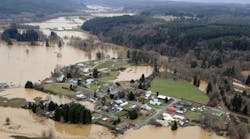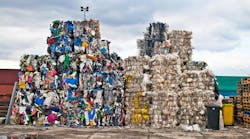I want to thank the editors of Stormwater for offering me this opportunity to open a dialogue with the many surface water professionals who work at the local level to protect the quality of our water.
Your work puts you in the front lines of public health and environmental protection. I congratulate you on all the work you’ve done and all the work you will do. Over the next several years I expect you will be part of the biggest push in a generation to clean up our nation’s waterways–the setting of total maximum daily loads, or TMDLs.
Back in 1969, northern Ohio’s Cuyahoga River–choking with pollution–caught fire. Our nation demanded action, and within a few years the Clean Water Act was passed by Congress.
We’ve made remarkable progress since then. But while rivers no longer burn, the problems of pollution still smolder in too many of our waterways. Some 20,000 river segments, lakes, bays, and estuaries across America–about 40% of America’s surveyed waterways–are still too polluted for fishing or swimming. More than 90% of all Americans live within 10 mi. of one of these polluted bodies of water.
The time has come to finish the job.
Last summer, the Clinton-Gore Administration announced a plan to clean up our nation’s waters lake by lake, river by river, and bay by bay. This proposal was drawn up after several years of consultation with an advisory committee made up of representatives of state and local governments, business and industry, farmers, sewage treatment plant operators, and other concerned groups. But we didn’t stop there.
During the period of public comment that followed the initial announcement, EPA made a number of changes in the proposal, including suggestions by members of Congress. In general, the changes provide the states with significant flexibility in implementing the program. These changes include:
- dropping provisions that could have required new permits for forestry,
- giving states four years instead of two years to update inventories of polluted waters,
- allowing states to establish their own schedules for when polluted waters meet health standards, with a goal of meeting them in 10 years whenever practicable.
Despite this wide level of cooperation–despite the fact that this cleanup model has worked in the Great Lakes and the Chesapeake Bay–and despite the obvious need for action, Congress enacted a legislative “rider” to block the clean water rule.
On July 11, the administration decided to act before this legislative prohibition went into effect and issued the new clean water rule. EPA has made the effective date for the new rule 30 days after the end of the rider delay, which presently ends October 1, 2001. Until this new rule goes into effect, the TMDL program will continue to operate under existing regulations.
This new rule is expected to help better address the greatest remaining threat to America’s waters: polluted runoff. Under this new rule, states will develop specific plans to make our waters healthy again. Recognizing that no two rivers, no two lakes, no two streams are identical, this is not a one-size-fits-all rule. States will develop plans that fit the needs of each individual waterway and its surrounding community.
This administration has made delivering clean, safe water to the American people a national priority. The Clinton-Gore Administration proposed and signed into law the Safe Drinking Water Act Amendments of 1996 and announced the Clean Water Action Plan that coordinates federal efforts to assist state and local governments in restoring and protecting America’s watersheds.
We know that clean water, in turn, nurtures healthy families and thriving communities. From the rebirth of Baltimore Harbor to the restoration of the Great Lakes, Chesapeake Bay, Florida Everglades and San Francisco Bay, communities across the country are coming together to make the tough decisions to protect their water resources and improve their quality of life. Even the Cuyahoga River has staged a remarkable comeback.
And with this clean-water rule, the Clinton-Gore Administration believes we have laid the foundation for even further progress. We are committed to the proposition that clean water for all Americans should forever be a crucial issue–but never again a burning one.


